The Emu is one of the tallest birds in the world. In fact, the only bird that is taller is their relative, the ostrich. Despite their similarity to the ostrich, Emus are actually more closely related to cassowaries.
Like ostriches and cassowaries, these birds are ratites, a group of flightless birds that normally have heavy bodies, long legs, and long necks. Like all ratites, these birds cannot fly, and instead use their long legs to run on the ground. Read on to learn about the Emu.
Description of the Emu
This species is quite large, with long legs, relatively small wings, and long necks. They use their long legs to run along the ground. Each foot has three forward facing toes, each of which has a long toenail. When threatened, Emus use their muscular legs to kick and defend themselves.
This bird’s wings are virtually useless, as they cannot fly. Their feathers are soft, fluffy, and brown. At their necks and heads their feathers become sparse and inconsistent, showing greyish-blue skin underneath. The largest of these birds stands over 6 feet tall, and weighs up to 88 pounds or so.
Interesting Facts About the Emu
These birds, like their cousin the ostrich, are relatively well known. Emus are incredibly charismatic and interesting birds, learn more about what makes them unique below.
- Deadbeat Moms – In the rest of the avian world, females usually take over most of the responsibility when it comes to chick rearing. When it comes to Emus, dad is the responsible one! Males build the nest, incubate the eggs, and voraciously defend their chicks, all without the help of the female. In fact, he is so protective of the chicks, he will drive mom away if she ventures too close!
- Dedicated Dad – Because mom doesn’t help him out, dad takes on a lot of responsibility when it comes time to breed. In fact, males usually do not eat or drink very much during this process. A male who is incubating eggs and caring for chicks loses a significant amount of weight.
- Emu Discovery – The first people to formally describe this interesting bird were European explorers in the 1789 Voyage to Botany Bay. Before the name Emu came around, the head of the voyage, Arthur Phillip, called the birds the “New Holland Cassowary.” Surprisingly he wasn’t far off, as Emus’ closest relatives are indeed cassowaries.
- European Destruction – Sadly, not all European explorers and settlers meant good news for these birds. Settlers quickly decimated two subspecies of dwarf Emus on Kangaroo Island and King Island. The King Island species was just short of three feet tall, and about half the size of the standard species.
Habitat of the Emu
This species lives primarily in open regions where they can spot potential predators from afar. They also prefer regions with easy access to water, so they avoid deserts and desert edges. Their favorite habitats are grasslands, savannas, open subtropical forest, and more.
These birds also range through more urban areas, like farms, pastures, orchards, and other manmade habitats. In fact, they are especially fond of farms because they usually have plenty of water for the birds to drink.
Distribution of the Emu
The natural range of this bird extends across most of Australia. They do not live in some of the central regions because they cannot survive extended periods without water. On the eastern coast of Australia these birds are less common than they once were, but their populations are thriving on some interior regions from which they were once absent.
Agricultural spread gives these birds access to water in once inhospitable regions. Some people keep Emus in an agricultural setting in various regions across the world.
Diet of the Emu
Emus are omnivores, which means that they feed on both plant and animal matter. They forage for seeds, berries, fresh grasses, and fruits, but usually do not eat leaves. These birds also hunt for a variety of small creatures, like grubs, spiders, beetles, grasshoppers, millipedes, caterpillars, and more.
Though infrequently, they also hunt small animals like lizards, snakes, and mice. Before the breeding season, males bulk up and build their fat stores so they can survive the nesting period.
Emu and Human Interaction
Humans utilize these birds in various ways, and one of the primary products that Emu farms produce is Emu oil. People also eat their meat, both farmed and wild. Historically, Australian aboriginals hunted these birds as a source of food for decades.
These birds destroy crops, and wheat in particular is a favorite. This even led to an “Emu War” between the Australian military and the native Emu populations! The birds won. Currently their populations are healthy, and the IUCN lists Emus as Least Concern.
Domestication
Humans have commercially farmed Emus since the 1970’s. While farmers do selectively breed their birds for the best meat production and easy handling, they have not undergone selection for a long enough period for people to consider them domesticated.
Does the Emu Make a Good Pet
No, Emus do not make good pets. Even on farms, these birds are difficult to care for because you need tall, sturdy fences to contain them. Additionally, they can be quite dangerous, and could potentially harm you if they kick you.
Emu Care
In zoos and farms, these birds live in large enclosures with fencing at least six feet tall. They need plenty of space to roam and forage for food. If their enclosures are too small the birds will run into the fence and injure themselves when frightened.
Emus in human care eat a commercial ratite feed that provides all the nutrients that they need. You can also feed them various fruits and vegetables as treats. Because they usually live in flocks, these birds need to at least live in pairs to meet their social needs.
Behavior of the Emu
These birds are diurnal, and are typically most active during the day. They forage in small groups, though solitary Emus are not unusual. When food or water is scarce, these birds travel long distances to find sustenance.
While migrating in search of food, large groups of Emus sometimes come together to form massive flocks. As the breeding season arrives they stop migrating and settle into a single location. Males perform courtship dances to attract a female.
Reproduction of the Emu
Once a female sees a dance that she likes, the pair mates. She lays her eggs in the nest the male has built, and then she leaves. Females sometimes move on to breed with another male. Males perform all incubation and chick rearing duties.
On average, a nest contains about 10 eggs, though some nests contain up to 2 dozen eggs. The father carefully rotates the eggs and defends them from predators. It takes around 45-60 days for the eggs to hatch. The chicks are dependent on their father until they are about 18 months old.
Beliefs, Superstitions, and Phobias About the Emu
Australian aboriginals have hunted Emus for many years. Thus, it is no surprise that these birds are quite present in ancient aboriginal culture and folklore.
One tale tells of the creation of the sun by throwing an Emu egg into the sky. In more recent times, the birds have been adopted as an icon in Australia, and they have been featured on many different products and organizations.



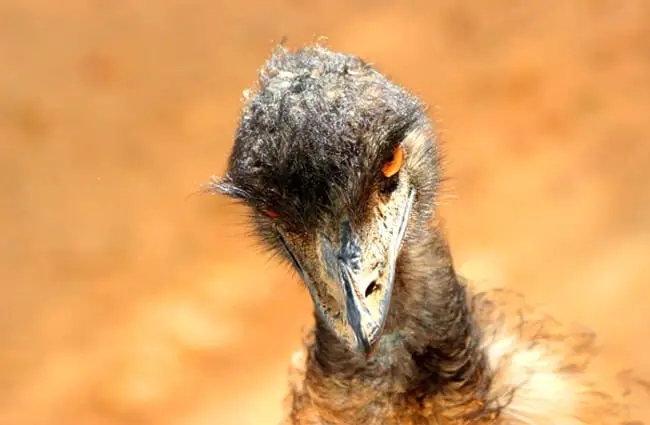
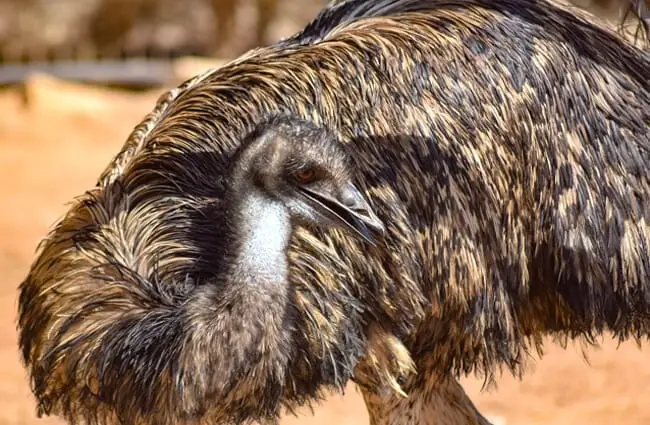

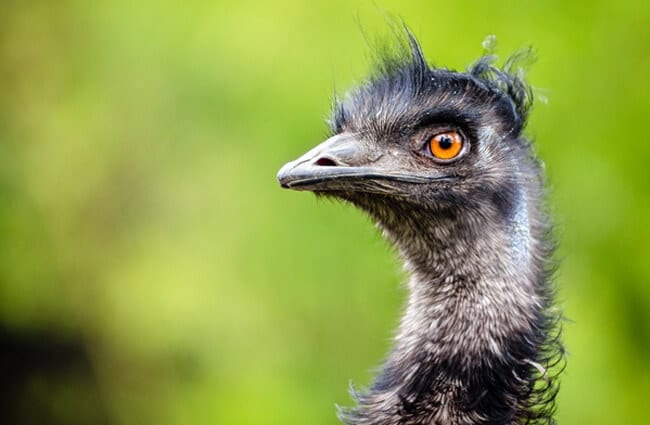

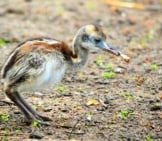
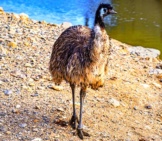
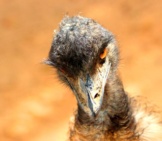

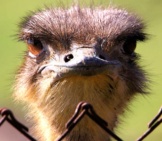
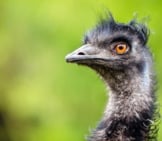

![Red Angus Closeup of a beautiful Red Angus cowPhoto by: U.S. Department of Agriculture [pubic domain]https://creativecommons.org/licenses/by/2.0/](https://animals.net/wp-content/uploads/2020/03/Red-Angus-4-238x178.jpg)












![Red Angus Closeup of a beautiful Red Angus cowPhoto by: U.S. Department of Agriculture [pubic domain]https://creativecommons.org/licenses/by/2.0/](https://animals.net/wp-content/uploads/2020/03/Red-Angus-4-100x75.jpg)

